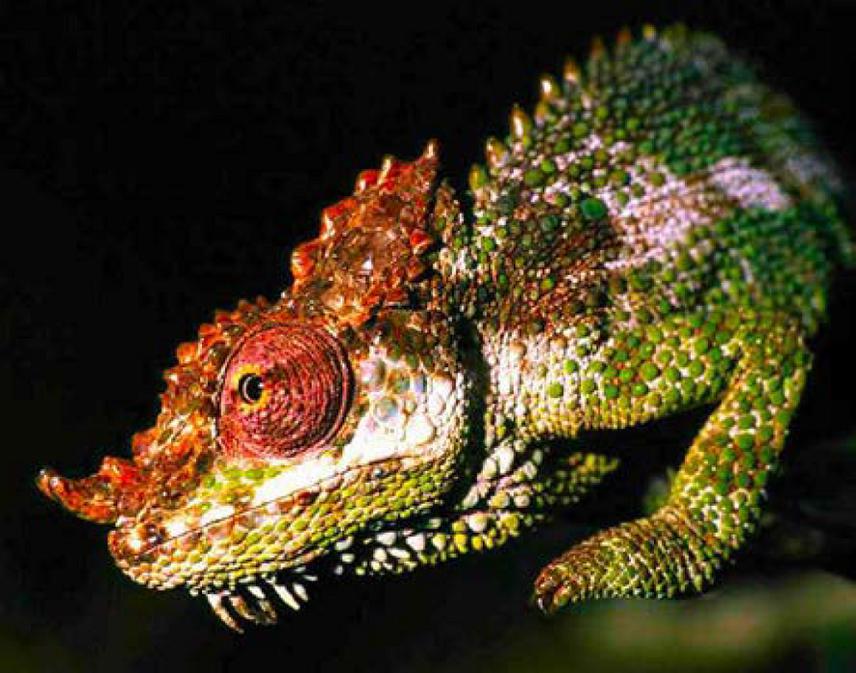Stephen Marcus Philip Spawls
Production, with a team of herpetologists at Kenya’s National Museum, of an illustrated, free, annotated online atlas of Kenya’s reptiles, showing distribution by quarter-degree squares.

Mt Nyiro Bearded Chameleon - Kinyongia asheorum.
I and the team of herpetologists at the National Museum of Kenya (NMK) intend to produce a free, downloadable, illustrated Reptile Atlas for Kenya. Using the spirit collection we will check out identifications, map onto quarter-degree square maps, do some field work at strategic locations, publicise our work and make the Atlas available in instalments as a series of free downloads for any interested conservationists and naturalists. Eventually the NMK team will take over the entire project.
Our Atlas will eventually show the distribution of all Kenya’s reptiles by quarter degree squares on a large map. Each species account (bilingual, Swahili/English) will have several colour photographs. The text includes local names, conservation significance, identification notes and medical importance for dangerous species. We will include a pictorial key, this combined with the map/pictures in each species account will enable rapid identification of reptiles, including medically significant ones.
We intend to heighten awareness about our atlas and reptiles in Kenya generally – they usually get a bad press! With knowledge, fear is taken away. We want to share our knowledge and put into place a bank of baseline natural history data that will be always available, continually updatable and free, to all who have access to a computer or a Smartphone in Kenya…and elsewhere. It will be useful to conservationists, interested professional biologists and any interested naturalist, including young people in schools and other educational institutes.
Books of natural history data are often expensive. This will be free; it can be downloaded onto school computers (the government are currently trying to get laptops into all schools), storage devices and onto cell phones. Our initial fieldwork will be looking at the distribution of dangerous species, including several high-profile endemic species, in particular the Kenya horned viper, Mt Kenya bush viper and Kenya Montane Viper. We will also give talks and use the media to heighten awareness about reptiles and the Atlas itself; we intend to contact conservation organizations, including Kenya Wildlife Service and the East African Natural History Society. We hope our work will not only stimulate awareness, be useful to all naturalists and medical professionals treating snakebite, but enable the identification of hotspots and under-sampled areas, pointers for further fieldwork.